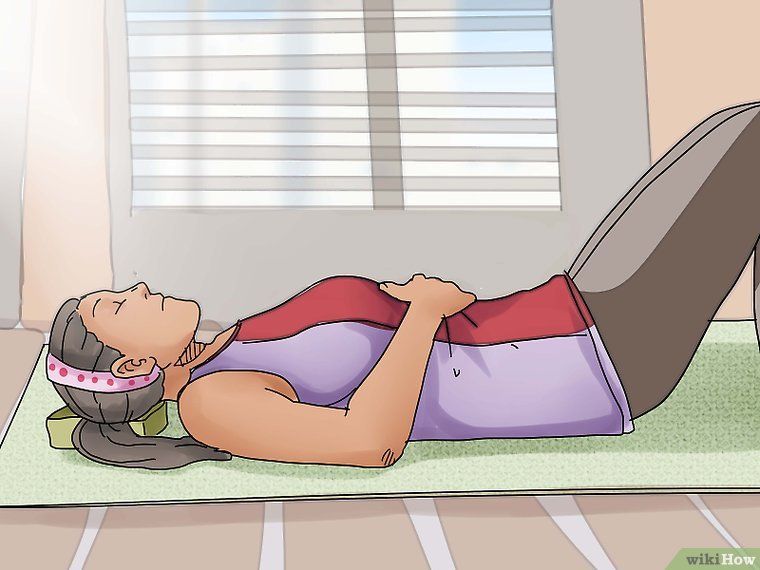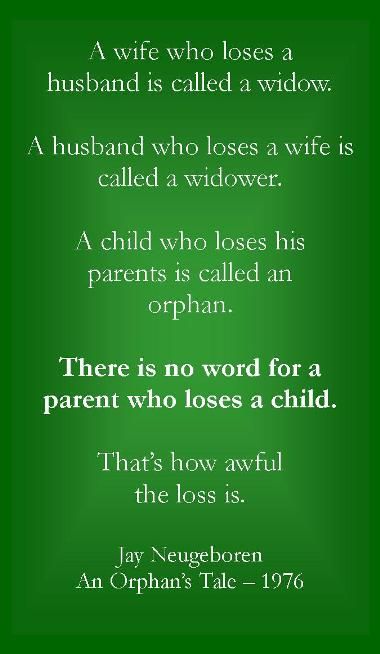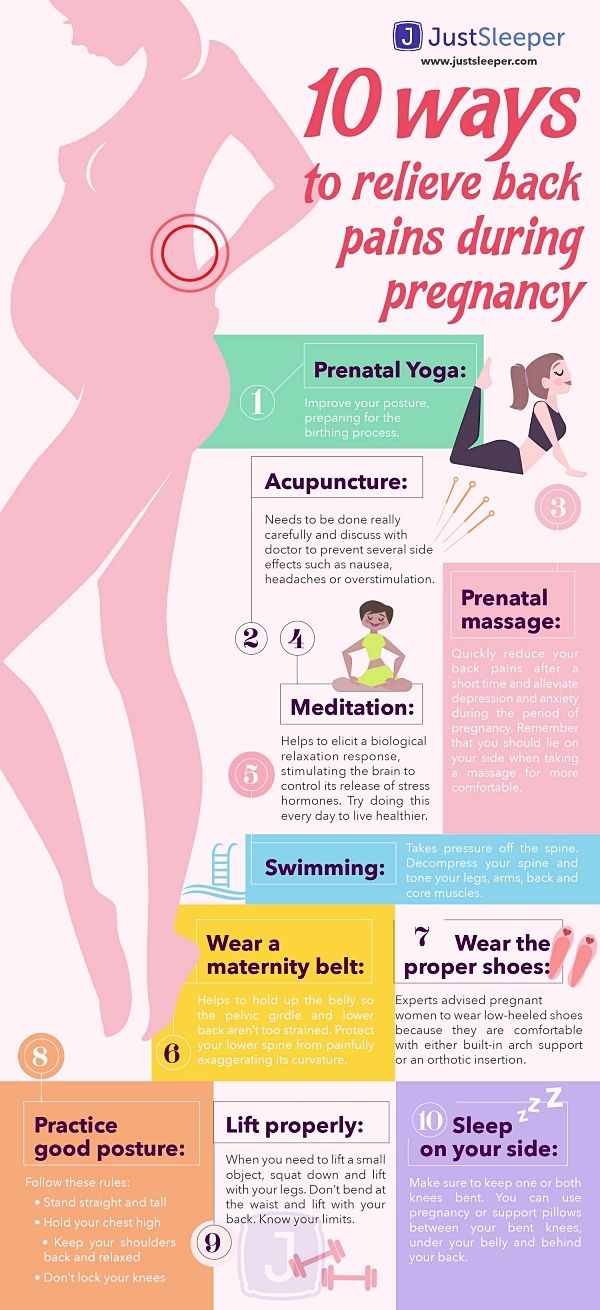Why does baby projectile vomit
Vomiting (0-12 Months)
Is this your child's symptom?
- Vomiting (throwing up) stomach contents
- Other names for vomiting are puking, barfing and heaving
Causes of Vomiting
- Viral Gastritis. Stomach infection from a stomach virus is the most common cause. Also called stomach flu. A common cause is the Rotavirus. The illness starts with vomiting. Watery loose stools may follow within 12-24 hours.
- Food Allergy. Vomiting can be the only symptom of a food reaction. The vomiting comes on quickly after eating the food. Uncommon in infants, but main foods are eggs and peanut butter.
- Coughing. Hard coughing can also cause your child to throw up. This is more common in children with reflux.
- Serious Causes. Vomiting alone should stop within about 24 hours. If it lasts over 24 hours, you must think about more serious causes. An example is a kidney infection.
A serious cause in young babies is pyloric stenosis. See below for more on this.
Pyloric Stenosis (Serious Cause)
- The most common cause of true vomiting in young babies.
- Onset of vomiting is age 2 weeks to 2 months
- Vomiting is forceful. It becomes projectile and shoots out.
- Right after vomiting, the baby is hungry and wants to feed. ("hungry vomiter")
- Cause: The pylorus is the channel between the stomach and the gut. In these babies, it becomes narrow and tight.
- Risk: Weight loss or dehydration
- Treatment: Cured by surgery.
Vomiting Scale
- Mild: 1 - 2 times/day
- Moderate: 3 - 7 times/day
- Severe: Vomits everything, nearly everything or 8 or more times/day
- Severity relates even more to how long the vomiting goes on for. At the start of the illness, it's common for a child to vomit everything.
 This can last for 3 or 4 hours. Children then often become stable and change to mild vomiting.
This can last for 3 or 4 hours. Children then often become stable and change to mild vomiting. - The main risk of vomiting is dehydration. Dehydration means the body has lost too much fluid.
- The younger the child, the greater the risk for dehydration.
Dehydration: How to Tell
- The main risk of vomiting is dehydration. Dehydration means the body has lost too much water.
- Vomiting with watery diarrhea is the most common cause of dehydration.
- Dehydration is a reason to see a doctor right away.
- Your child may have dehydration if not drinking much fluid and:
- The urine is dark yellow and has not passed any in over 8 hours.
- Inside of the mouth and tongue are very dry.
- No tears if your child cries.
- Slow blood refill test: Longer than 2 seconds. First, press on the thumbnail and make it pale. Then let go. Count the seconds it takes for the nail to turn pink again. Ask your doctor to teach you how to do this test.

When to Call for Vomiting (0-12 Months)
Call 911 Now
- Can't wake up
- Not moving
- You think your child has a life-threatening emergency
Call Doctor or Seek Care Now
- Dehydration suspected. No urine in over 8 hours, dark urine, very dry mouth and no tears.
- Stomach pain when not vomiting. Exception: stomach pain or crying just before vomiting is quite common.
- Age less than 12 weeks old with vomiting 2 or more times. Exception: normal spitting up.
- Vomited 3 or more times and also has diarrhea
- Severe vomiting (vomits everything) more than 8 hours while getting Pedialyte (or breastmilk)
- Head injury within the last 24 hours
- Weak immune system. Examples are sickle cell disease, HIV, cancer, organ transplant, taking oral steroids.
- Vomiting a prescription medicine
- Fever over 104° F (40° C)
- Fever in baby less than 12 weeks old. Caution: Do NOT give your baby any fever medicine before being seen.

- Your child looks or acts very sick
- You think your child needs to be seen, and the problem is urgent
Contact Doctor Within 24 Hours
- All other infants (age less than 1 year) with vomiting. See Care Advice while waiting to discuss with doctor.
Seattle Children's Urgent Care Locations
If your child’s illness or injury is life-threatening, call 911.
- Bellevue
- Everett
- Federal Way
- Seattle
Care Advice for Vomiting
- What You Should Know About Vomiting:
- Most vomiting is caused by a viral infection of the stomach.

- Vomiting is the body's way of protecting the lower gut.
- The good news is that stomach illnesses last only a short time.
- The main risk of vomiting is dehydration. Dehydration means the body has lost too much fluid.
- Here is some care advice that should help.
- Most vomiting is caused by a viral infection of the stomach.
- Formula Fed Babies - May Give Oral Rehydration Solution (ORS) for 8 Hours:
- If vomits once, give half the regular amount of formula every 1 to 2 hours.
- If vomits formula more than once, offer ORS for 8 hours. If you don't have ORS, use formula until you can get some.
- ORS is a special fluid that can help your child stay hydrated. You can use Pedialyte or the store brand of ORS. It can be bought in food stores or drug stores.
- Spoon or syringe feed small amounts. Give 1-2 teaspoons (5-10 mL) every 5 minutes.
- After 4 hours without throwing up, double the amount.
- Return to Formula. After 8 hours without throwing up, go back to regular formula.

- Breastfed Babies - Reduce the Amount Per Feeding:
- If vomits once, nurse half the regular time every 1 to 2 hours.
- If vomits more than once, nurse for 5 minutes every 30 to 60 minutes. After 4 hours without throwing up, return to regular nursing.
- If continues to vomit, switch to pumped breastmilk. (ORS is rarely needed in breastfed babies. It can be used if vomiting becomes worse).
- Spoon or syringe feed small amounts of pumped milk. Give 1-2 teaspoons (5-10 mL) every 5 minutes.
- After 4 hours without throwing up, return to regular feeding at the breast. Start with small feedings of 5 minutes every 30 minutes. As your baby keeps down the smaller amounts, slowly give more.
- Pumped Breastmilk Bottle-Fed Infants - Reduce the Amount per Feeding:
- If vomits once and bottle-feeding breastmilk, give half the regular amount every 1-2 hours.
- If vomits more than once within last 2 hours, give 1 ounce (30 mL) every 30 to 60 minutes.

- If continues to vomit, give 1-2 teaspoons (5-10 mL) every 5 minutes. Only if not tolerating breastmilk, switch to ORS (e.g., Pedialyte) for every 5 minutes for a few hours.
- After 4 hours without vomiting, return to regular feedings. Start with 1 ounce (30 mL) every 30 minutes and slowly increase as tolerated.
- Stop All Solid Foods:
- Avoid all solid foods and baby foods in kids who are vomiting.
- After 8 hours without throwing up, gradually add them back.
- If on solid foods, start with starchy foods that are easy to digest. Examples are cereals, crackers and bread.
- Do Not Give Medicines:
- Stop using any drug that is over-the-counter for 8 hours. Reason: Some of these can make vomiting worse.
- Fever. Mild fevers don't need to be treated with any drugs. For higher fevers, you can use an acetaminophen suppository (such as FeverAll). This is a form of the drug you put in the rectum (bottom).
 Ask a pharmacist for help finding this product. Do not use ibuprofen. It can upset the stomach.
Ask a pharmacist for help finding this product. Do not use ibuprofen. It can upset the stomach. - Call your doctor if: Your child vomits a drug ordered by your doctor.
- Try to Sleep:
- Help your child go to sleep for a few hours.
- Reason: Sleep often empties the stomach and removes the need to vomit.
- Your child doesn't have to drink anything if his stomach feels upset and he doesn't have any diarrhea.
- Return to Child Care:
- Your child can return to child care after the vomiting and fever are gone.
- What to Expect:
- For the first 3 or 4 hours, your child may vomit everything. Then the stomach settles down.
- Vomiting from a viral illness often stops in 12 to 24 hours.
- Mild vomiting and nausea may last up to 3 days.
- Call Your Doctor If:
- Vomits clear fluids for more than 8 hours
- Vomiting lasts more than 24 hours
- Blood or bile (green color) in the vomit
- Stomach ache present when not vomiting
- Dehydration suspected (no urine in over 8 hours, dark urine, very dry mouth, and no tears)
- You think your child needs to be seen
- Your child becomes worse
And remember, contact your doctor if your child develops any of the 'Call Your Doctor' symptoms.
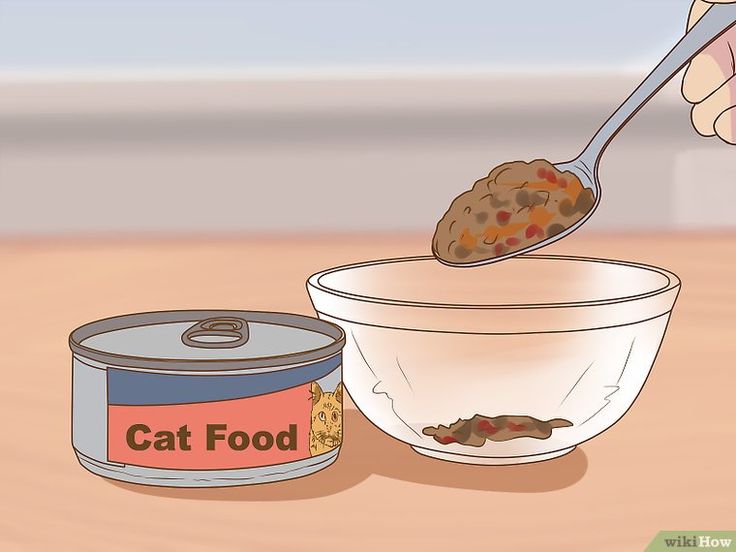
Disclaimer: this health information is for educational purposes only. You, the reader, assume full responsibility for how you choose to use it.
Last Reviewed: 11/15/2022
Last Revised: 09/21/2022
Copyright 2000-2022 Schmitt Pediatric Guidelines LLC.
Pyloric Stenosis (for Parents) - Nemours KidsHealth
What Is Pyloric Stenosis?
Pyloric stenosis is a condition that can affect the gastrointestinal tract in babies. It can make a baby vomit forcefully and often, and can lead to other problems, such as dehydration. Pyloric stenosis needs medical care right away.
What Happens in Pyloric Stenosis?
Food and other stomach contents pass through the pylorus, the lower part of the stomach, to enter the small intestine. Pyloric stenosis (pie-LOR-ik stih-NOE-sis) is a narrowing of the pylorus. When a baby has pyloric stenosis, this narrowing of the pyloric channel prevents food from emptying out of the stomach.
Pyloric stenosis (also called infantile hypertrophic pyloric stenosis) is a type of gastric outlet obstruction, which means a blockage from the stomach to the intestines.
Pyloric stenosis affects about 3 out of 1,000 babies in the United States. It's more likely to affect firstborn male infants and also runs in families — if a parent had pyloric stenosis, then a baby has up to a 20% risk of developing it. Most infants who have it develop symptoms 3 to 5 weeks after birth.
What Causes Pyloric Stenosis?
It's thought that babies who develop pyloric stenosis are not born with it, but have progressive thickening of the pylorus after birth. A baby will start to show symptoms when the pylorus is so thick that the stomach can't empty properly.
The cause of this thickening isn't clear. It might be a combination of several things. For example, use of erythromycin (an antibiotic) in babies in the first 2 weeks of life or antibiotics given to moms at the end of pregnancy or during breastfeeding can be associated with pyloric stenosis.
What Are the Signs & Symptoms of Pyloric Stenosis?
Symptoms of pyloric stenosis typically begin when a baby is around 3 weeks old. They include:
- Vomiting. The first symptom is usually vomiting. At first it may seem that the baby is just spitting up often, but then it tends to become projectile vomiting, in which the breast milk or formula is ejected forcefully from the mouth, in an arc, sometimes over a distance of several feet. Projectile vomiting usually takes place soon after the end of a feeding, although in some cases it can happen hours later.
The vomited milk might smell curdled because it has mixed with stomach acid. The vomit will not contain bile, a greenish fluid from the liver that mixes with digested food after it leaves the stomach.
Despite vomiting, a baby with pyloric stenosis is usually hungry again soon after vomiting and will want to eat. It's important to know that even with the vomiting, the baby might not seem to be in great pain or at first look very ill.
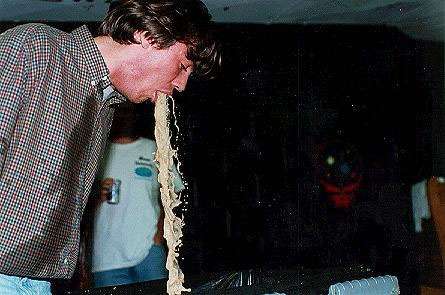
- Changes in stools. Babies with pyloric stenosis usually have fewer, smaller stools (poops) because little or no food is reaching the intestines. Constipation or poop with mucus also can happen.
- Failure to gain weight or weight loss. Most babies with pyloric stenosis will fail to gain weight or will lose weight. As the condition gets worse, they might become dehydrated.
Dehydrated infants are less active than usual, and they may develop a sunken "soft spot" on their heads and sunken eyes, and their skin may look wrinkled. Because less pee is made, they can go more than 4 to 6 hours between wet diapers.
- Waves of peristalsis. After feeds, increased stomach contractions may make noticeable ripples, which move from left to right over the baby's belly as the stomach tries to empty itself against the thickened pylorus.
It's important to call your doctor if your baby has any of these symptoms.
Other conditions can cause similar problems. For instance:
- gastroesophageal reflux (GER) usually begins before 8 weeks of age. GER involves lots of spitting up (reflux) after feedings, which can look like vomiting. But most babies with GER don't have projectile vomiting, and while they might have trouble gaining weight, they usually have normal poops.
- a milk protein allergy also can make a baby spit up or vomit, and have diarrhea. But these babies don't have projectile vomiting.
- gastroenteritis (inflammation in the digestive tract that can be caused by viral or bacterial infection) also can cause vomiting and dehydration. But babies with gastroenteritis usually also have diarrhea with loose, watery, or sometimes bloody stools. Diarrhea usually isn't seen with pyloric stenosis.
How Is Pyloric Stenosis Diagnosed?
The doctor will ask detailed questions about the baby's feeding and vomiting patterns, including what the vomit looks like. The doctor will do an exam, and note any weight loss or failure to maintain growth since birth.
The doctor will do an exam, and note any weight loss or failure to maintain growth since birth.
The doctor will check for a lump in the abdomen. If the doctor feels this lump, which usually is firm and movable and feels like an olive, it's a strong indication that a baby has pyloric stenosis.
If pyloric stenosis seems likely, the doctor probably will order an abdominal ultrasound. The enlarged, thickened pylorus will show on ultrasound images. The doctor may ask that the baby not be fed for several hours before an ultrasound.
Sometimes doctors order a barium swallow instead of an ultrasound. Babies swallow a small amount of a chalky liquid (barium). Then, special X-rays are done that let the doctor check the pyloric area for any narrowing or blockage.
The doctor also might order blood tests to check levels of electrolytes (minerals that help keep fluids balanced and vital organs working properly). An electrolyte imbalance often happens due to the ongoing vomiting of stomach acid and dehydration, and needs to be corrected.
How Is Pyloric Stenosis Treated?
When an infant is diagnosed with pyloric stenosis, either by ultrasound or barium swallow, the baby will be admitted to the hospital and prepared for surgery. Any dehydration or electrolyte problems in the blood will be corrected with intravenous (IV) fluids, usually within 24 hours.
Doctors do a surgery called pyloromyotomy (pie-lor-oh-my-OT-uh-me) to relieve the blockage. Using a small incision (cut), the surgeon examines the pylorus and separates and spreads the thick, tight muscles. This relaxes and opens those muscles.
The surgery can also be done through laparoscopy. This technique uses a tiny scope placed through a small cut in the belly button, letting the doctor see the area of the pylorus. Using other small instruments placed in nearby incisions, the doctor can complete the surgery.
Most babies return to normal feedings fairly quickly, usually 3 to 4 hours after the surgery. Because of swelling at the surgery site, a baby may still vomit small amounts for a day or so. If there are no complications, most babies who have had pyloromyotomy can return to a normal feeding schedule and go home within 24 to 48 hours of the surgery.
If there are no complications, most babies who have had pyloromyotomy can return to a normal feeding schedule and go home within 24 to 48 hours of the surgery.
If you're breastfeeding, you might worry about continuing while your baby is hospitalized. The hospital staff should be able to provide a breast pump and help you use it so that you can continue to express milk until your baby can feed regularly.
After a successful pyloromyotomy, your baby won't need to follow any special feeding schedules. Your doctor will probably want to examine your child at a follow-up appointment to make sure the surgical site is healing properly and that your baby is feeding well and maintaining or gaining weight.
Pyloric stenosis should not happen again after a pyloromyotomy. If your baby still has symptoms weeks after the surgery, there might be another medical problem, such as gastritis or GER, so let your doctor know right away.
When Should I Call the Doctor?
Pyloric stenosis is an urgent condition that needs immediate treatment. Call your doctor if your baby:
Call your doctor if your baby:
- has lasting or projectile vomiting after feeding
- is losing weight or not gaining weight as expected
- is less active than usual or is very sleepy
- has few or no stools (poops) over a period of 1 or 2 days
- show signs of dehydration, such as more than 4 to 6 hours between wet diapers, a sunken "soft spot" on the head, or sunken eyes
causes and first aid for a child
We treat children according to the principles of evidence-based medicine: we choose only those diagnostic and treatment methods that have proven their effectiveness. We will never prescribe unnecessary examinations and medicines!
Make an appointment via WhatsApp
Prices Doctors
The first children's clinic of evidence-based medicine in Moscow
No unnecessary examinations and medicines! We will prescribe only what has proven effective and will help your child.
Treatment according to world standards
We treat children with the same quality as in the best medical centers in the world.
The best team of doctors in Fantasy!
Pediatricians and subspecialists Fantasy - highly experienced doctors, members of professional societies. Doctors constantly improve their qualifications, undergo internships abroad.
Ultimate treatment safety
We made pediatric medicine safe! All our staff work according to the most stringent international standards JCI
We have fun, like visiting best friends
Game room, cheerful animator, gifts after the reception. We try to make friends with the child and do everything to make the little patient feel comfortable with us.
You can make an appointment by calling or by filling out the form on the website
Other services of the section "Pediatric gastroenterology"
- Consultation of a pediatric gastroenterologist
Frequent calls
- Gastritis in children
- GERD (Gastroesophageal reflux disease) in children
- Duodenitis in children
- Pancreatitis in children
- Irritable bowel syndrome in children
- Regurgitation in newborns
- Helicobacter pylori infection in children
- Hepatitis in children
- Diarrhea in children
- Constipation in a child
- Cholecystitis in children
- Cholelithiasis
- Peptic ulcer of the stomach and duodenum
- Abdominal pain in children
Online payment
Documents online
Online services
Vomiting in children - types, causes and treatment
Your child wakes up in the morning and refuses to touch breakfast. This is characteristic of a child who is generally happy and likes to have fun, he seems capricious. Then he suddenly turns blue and puts back everything he ate in the morning. While vomiting helps get rid of undigested food, you should be concerned when you notice your child is vomiting frequently. Be sure to cleanse your stomach naturally, but frequent bouts of vomiting should worry you.
This is characteristic of a child who is generally happy and likes to have fun, he seems capricious. Then he suddenly turns blue and puts back everything he ate in the morning. While vomiting helps get rid of undigested food, you should be concerned when you notice your child is vomiting frequently. Be sure to cleanse your stomach naturally, but frequent bouts of vomiting should worry you.
during a seizure Vomiting Your child pushes the contents of his stomach through his mouth. There can be many reasons for vomiting, such as: Gastritis Food poisoning, overeating and head trauma. Some forms of cancer also cause vomiting, so it's important to find out the possible cause quickly.
In this article
Types of vomiting your baby may experience
Your baby may experience the following types of vomiting:
1. Possession
If you are breastfeeding, your baby will usually vomit a small amount of milk immediately after each feed.
2.
 Vomiting.
Vomiting. When your child pushes out the contents of his stomach with force, this is called projectile vomiting. Although the volume may seem quite large, in general, vomiting consists of only the last feeding of the baby. This type of vomiting can occur intermittently, but can be worrisome if it occurs after each feed.
3. Carrot.
Young children usually experience this type of vomiting. It happens when a valve in the baby's upper abdomen accidentally opens. This causes the contents of the stomach to move backwards up the esophagus/food tube. Rebound in children is usually harmless and stops when they start to sit up straight or walk.
Causes of vomiting in children
Here are some common causes of vomiting in children:
1. Allergy to certain foods.
Your child may be allergic to foods such as milk Wheat, eggs, fish, and peanuts may cause a reaction if eaten. may suffer from severe abdominal pain. It can be monitored for nausea and vomiting.
2. Gastroenteritis.
Children often vomit when they have this infection. Bacteria, viruses and parasites are among the main causes of gastroenteritis in children and lead to infection. with diarrhea.
3. Problems with digestion.
If your child has an appendicitis or a digestive blockage He may vomit. Acid reflux of the stomach is also one of the causes of vomiting in children.
4. Food poisoning.
This may cause severe nausea and vomiting resulting in dryness. Food poisoning is often caused by harmful bacteria found in meat, poultry, or poultry. Pisces is pointless. If food poisoning is suspected, look out for general signs such as nausea, stomach pain, etc. If you have diarrhea, have your baby.
5. Stress and emotional disorders.
If you have I recently moved to a new city Or if your child is now going to مدرسة different, these changes may cause unnecessary stress. Your child will also be nervous before or during an exam, participate in discussions/quizzes or interact with new people. This situation is often the cause of nausea and vomiting in children.
This situation is often the cause of nausea and vomiting in children.
6. Influenza and other diseases
seasonal allergies, stomach acid reflux, swine flu, ear infections There are some diseases that can cause vomiting in young children. Appendicitis causes severe abdominal pain, which can lead to vomiting in young children. In such cases, the appendix may need to be removed and the vomiting may stop. Labyrinthitis (an ear infection) causes severe dizziness, and this spinning sensation is a common cause of vomiting in children.
7. Brain tumors.
It often happens that the emotional trauma of a child (death in the family, divorce or separation of parents) leads to severe vomiting. Brain tumors cause brain swelling and this pressure is what causes children to vomit.
Symptoms of vomiting in children
Parents should watch for the following signs and symptoms in children and vomiting can be treated accordingly. They are:
- Severe headache
- Full sleeping
- Skinny Eyes
- ouch
- Fatigue
- Dry mouth
- Quick deep breath
- LEFTION OF URIGING FRISHING 900 He will need answers about the onset of vomiting, the number of times the child vomits, and the food before vomiting.
- Abdominal x-ray: These x-rays are useful in identifying any blockages that may be in your child's digestive system. This proves to be a valuable guide for the physician in establishing the cause of the vomiting.
- Computed tomography of the abdomen : This test is done to look for a tumor or appendicitis. Clear pictures of the baby's abdomen are taken using a computer and an X-ray machine.
- Blood tests: This is the first test done to check for infections. Blood tests are also recommended to check for any defects in organs such as the stomach, liver, or brain.
- Ultrasound of the abdomen or pelvis: This test uses sound waves to show what the internal organs look like from the inside.
 If your child has problems with the stomach, digestive system, or appendix, an ultrasound may be able to detect them.
If your child has problems with the stomach, digestive system, or appendix, an ultrasound may be able to detect them. - ORS Oral Rehydration Solution: Severe dehydration can be quickly prevented by giving an oral rehydration solution known as ORS. This mixture of salt, sugar and water is helpful in replenishing fluid loss due to excessive vomiting. It should be given at regular intervals until the child feels better.
- Medicines for nausea: It is very important to calm your child's stomach and reduce the feeling of vomiting. Anti-nausea medicines do exactly the same thing and help manage your child's vomiting episodes.

- Antibiotics Doctors will definitely prescribe a dose of antibiotics so that your child can prevent flu or bacterial attacks. However, you will need to make sure that your child completes the full course recommended by the doctor. Failure to do so may not produce the expected results.
- intravenous fluids: This step may be necessary if the child refuses to take fluids by mouth. The necessary fluids are then given intravenously to avoid dehydration.
- Focus on your child's diet Lots of fluids should be an important and essential element of your child's system during this period. ORS or oral rehydration solutions should be taken regularly. Water and diluted fruit juices are other options for rehydrating the body.
 Avoid soft drinks and fruit juices such as apple, pear or cherry juice because they are high in sugar. Your child's diet should include fruits, vegetables, yogurt, rice, and potatoes. Oily and oily, hard to digest foods should be completely avoided. If your child is breastfeeding, do not stop breastfeeding until your doctor tells you to. Breast milk for infants is easy to digest, so ORS is not recommended for infants.
Avoid soft drinks and fruit juices such as apple, pear or cherry juice because they are high in sugar. Your child's diet should include fruits, vegetables, yogurt, rice, and potatoes. Oily and oily, hard to digest foods should be completely avoided. If your child is breastfeeding, do not stop breastfeeding until your doctor tells you to. Breast milk for infants is easy to digest, so ORS is not recommended for infants. - Oral Rehydration Therapy: Although this remedy does not help vomiting on its own, it is a powerful remedy for dehydration. ORS mixtures are available from local pharmacies, in most cases without a doctor's prescription. Use a spoon, cup, or feeding bottle to feed your baby oral rehydration solution if dehydration or diarrhea is mild. Use ORS if your child refuses to eat or stick to his usual diet. Read the recommended dose on the package and feed your baby regularly. Once the ORS solution is taken correctly, your child will be able to follow a normal diet.

- Reducing triggers for vomiting: External factors such as smoke, heat, strong odors, humidity, laxative lotions and perfumes can cause vomiting. Avoid them if possible. Choose a cool, ventilated room for your child. It is recommended to install a humidifier to control indoor humidity. Sudden movements can cause vomiting and nausea, so keep your baby in bed as long as possible. Perfumes, deodorants, and air fresheners can make your baby uncomfortable, so don't spray them until your baby is fully recovered. During this time, keep away from foods that exude strong odors.
- Mix Salt and Sugar: This ancient remedy works quickly and can be made with everyday ingredients. Constant vomiting can worsen the condition of the gastric mucosa, lead to severe dehydration and the removal of essential nutrients from the child's body.
 This simple blend can replenish fluids and hydrate the body.
This simple blend can replenish fluids and hydrate the body. - Papaya This commonly available fruit is rich in antibacterial compounds that aid digestion and reduce body acidity. Includes Papaya It contains all the necessary natural enzymes that contribute to the smooth and rapid digestion of food. Papaya It is also helpful in removing harmful microbes that cause indigestion.
- Onion Juice: Mix 1 teaspoon of onion juice with an equal amount of ginger juice and feed it to your baby. The home remedy is very useful for stopping vomiting and nausea because it has natural antibiotic properties. if it is not ginger Easily available, take one and a half glasses of onion juice and add two tablespoons of natural honey to it. Feed your baby half a teaspoon at a time until the vomiting stops.
- Cumin Cumin seeds are known to be one of the best home remedies for vomiting, which increase the secretion of pancreatic enzymes.
 It settles in the stomach, and digestion improves significantly, as well as the feeling of discomfort decreases. Boil a cup of water and add freshly ground cumin seeds to it. nutmeg This combination may increase its effectiveness in treating vomiting in children. Another combination you can try is one teaspoon of cumin and cardamom powder with one teaspoon of honey. Make sure your child consumes this mixture slowly to avoid vomiting.
It settles in the stomach, and digestion improves significantly, as well as the feeling of discomfort decreases. Boil a cup of water and add freshly ground cumin seeds to it. nutmeg This combination may increase its effectiveness in treating vomiting in children. Another combination you can try is one teaspoon of cumin and cardamom powder with one teaspoon of honey. Make sure your child consumes this mixture slowly to avoid vomiting. - apple cider vinegar : Take a tablespoon Honey و apple cider vinegar Then mix them in a glass of water. Give this mixture to your baby at regular intervals. Vinegar has antimicrobial properties that help treat food poisoning. Mix vinegar with water and ask your child to rinse their mouth with it. This will eliminate the sour smell of the vomit and reduce the resulting sensation of vomiting. Vinegar is also a great way to flush out toxins from the body.
- mint If you want to quickly get rid of vomiting and nausea, peppermint is an excellent antidote that works wonders.
 To prepare this remedy, boil water and add 10 tablespoons of dried (organic) mint leaves. Soak the mint leaves in water for XNUMX minutes and then strain. Give this solution three times a day to get rid of vomiting. Chewing fresh mint leaves is also a proven way to reduce nausea. A mixture of lemon juice, mint juice, and honey (1 teaspoon each) can be equally effective for vomiting.
To prepare this remedy, boil water and add 10 tablespoons of dried (organic) mint leaves. Soak the mint leaves in water for XNUMX minutes and then strain. Give this solution three times a day to get rid of vomiting. Chewing fresh mint leaves is also a proven way to reduce nausea. A mixture of lemon juice, mint juice, and honey (1 teaspoon each) can be equally effective for vomiting. - ginger : Ginger is a proven remedy for stopping vomiting in children because of its natural antiemetic properties. Effectively soothes the digestive system for your child. Squeeze XNUMX teaspoon fresh ginger juice into a bowl and add XNUMX teaspoon Lemonade Approx. Mix well and feed your baby every two hours. This will help him overcome the bout of vomiting and nausea. Kids love fresh ginger tea with honey, so you might as well give it a try.
- Rice water: This rice water is the basis of white rice starch. When gastritis is the cause of vomiting, rice water can be very effective.
 Make sure you are using white rice and not brown because starch is easily obtained from white rice. digestion For young children. To prepare it, take XNUMX glass of white rice, add XNUMX glass of water to it and boil it. Strain this mixture and separate the rice water in a cup. Feed this rice water to your sick child and watch the vomiting decrease and then gradually disappear.
Make sure you are using white rice and not brown because starch is easily obtained from white rice. digestion For young children. To prepare it, take XNUMX glass of white rice, add XNUMX glass of water to it and boil it. Strain this mixture and separate the rice water in a cup. Feed this rice water to your sick child and watch the vomiting decrease and then gradually disappear.
 This will help him diagnose your child's condition correctly, so be sure to provide the necessary answers.
This will help him diagnose your child's condition correctly, so be sure to provide the necessary answers. In addition to the external examination done by the doctor, he will also suggest the medical tests listed below to complete his diagnosis. These tests include:
treatment
Worried parents usually want to know how to stop their children from vomiting because vomiting leads to fluid loss. Your child will become dehydrated as a result, so prompt treatment is important. Otherwise, the condition may worsen and hospitalization may be required.
Here are some things to do if your child is vomiting:
Tips to help your child overcome vomiting
Most parents don't know what to do and wonder what to do if their child vomits. The following tips will prove how to beat vomiting:
Natural remedies for vomiting in children
If your child vomits frequently, try the home remedies below. These simple, easy-to-use remedies provide natural relief:
When should you call your doctor?
It is important to seek immediate medical attention by calling your doctor if you notice any of the following symptoms in your child: stool
- vomiting
- Lethargy and heaviness in response
- Warning
Failure to follow certain precautions for vomiting can have serious consequences:
- Make sure your child is sitting or standing while vomiting. If it is in a horizontal position, it can lead to suffocation.
- Tell the child to keep his mouth open and not to control vomiting in any way.

